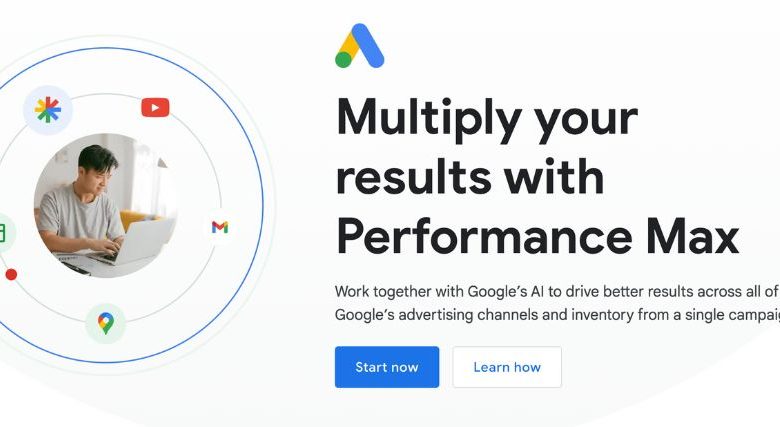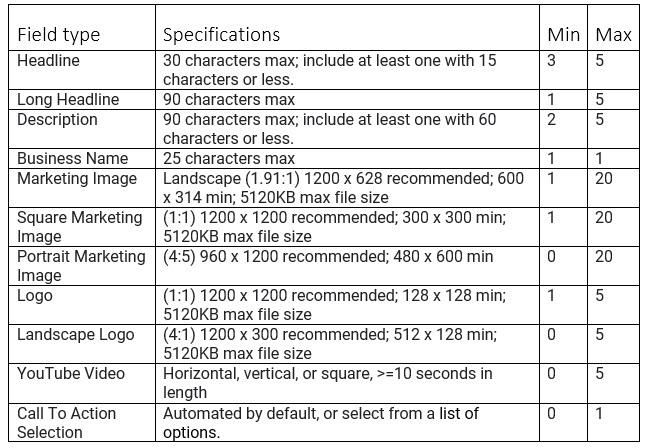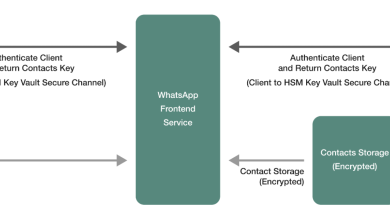Performance Max Campaigns (A Complete Guide For 2024)

If you want to amplify your brand’s advertising and conversion performance, Google Ads’ Performance Max campaigns could be the best campaign strategy for you.
On average, advertisers using Performance Max gain over 18% more conversions at a similar cost per action. Since Performance Max was launched in November 2021, many businesses have been using it, testing it, and monitoring its success.
For example, digital lending company MoneyMe saw a 22% increase in conversions and a 20% reduction in overall cost per action (CPA) after six weeks of using Performance Max.
Music-streaming service Deezer saw a 28% increase in subscriptions and a 15% reduction in cost per subscription.
The seventh-largest car manufacturer in the world, SAIC-MG, saw a 39% increase in new leads and an 83% decrease in cost-per-lead (CPL).
If you’re keen on using Performance Max for your business but would like to study it more before jumping in, this is the complete guide for you.
What Is A PMax Campaign?
Performance Max (PMax) campaigns enable advertisers to access all Google Ads channels and inventory from a single campaign using Google’s automation powers. This means that your ads could be shown to a wide variety of different audiences.
PMax helps you drive better advertising performance by converting more customers across all of Google’s advertising platforms. These platforms include Google Search, Discover, Display, Gmail, Maps, and YouTube.
PMax was designed to complement advertisers’ keyword-based search campaigns by helping them find more converting customers across all Google channels.
In your Google Ads dashboard, Performance Max will be shown as a campaign type selection if your advertising objective is “Leads,” “Local store visits and promotions,” or “Sales.”
How Does PMax Work?

Basically, artificial intelligence (AI)-powered Google Search and PMax enable you to maximize conversions across all of Google. They turbo-boost your Search campaigns by combining broad match keywords with Smart Bidding, which is a collection of bid strategies that use Google AI to optimize for conversion value in each auction.
These Smart Bidding strategies are:
- Maximize conversions
- Target CPA
- Target Return on Ad Spend (ROAS):
- Maximize conversion value
- Automated bidding strategies
Performance Max then expands on these by helping you drive incremental conversions across all Google advertising channels.
PMax uses your advertising objective, conversion goals, and audience signals to make sure that your ads reach the right audiences at the right time.
Conversion Goals
Conversion goals help you define, organize, and manage your conversion actions so that you can more easily optimize toward your advertising objective. They also help you flexibly choose which objective each campaign should optimize towards. Google conversion goals can be standard goals, account default goals, or custom goals.
Standard goals are conversion actions you add that are automatically grouped based on their conversion category type, such as “Contacts,” “Submit lead forms,” and “Purchases.”
You can choose standard goals as the goals for default bidding optimization across all campaigns in your account. They then become “account-default goals.” Those standard goals that you did not select as account-default goals can still be used for bidding optimization in particular campaigns.
Custom goals are recommended for more advanced users. These are the goals that you create and add with any combination of primary and secondary conversion actions. For example, you can create a custom goal with the “purchase” conversion as the primary conversion action and the “submit lead form” as the secondary conversion action.
Asset Group
PMax creates your ads from your asset group or your collection of creatives. These creatives are the images, videos, headlines, descriptions, logos, and audience signals that you add to your asset group.
These assets are automatically mixed and matched to find the top-performing combinations based on which Google Ad channel your ad appears on. You can see previews of how your ads look and make any necessary adjustments before you publish them.
Audience Signals
Google audience signals are the cues that help Google’s machine learning algorithm learn more about your target audience. They can be demographic, interest, remarketing, or behavior signals.
Google’s demographic signals are:
- Age
- Gender
- Location
- Interface language
Interest signals are:
- Affinity audiences
- In-market audiences
- Custom-intent audiences:
- User interest
- App ratings and reviews
Remarketing signals are:
- Website/app visitors’ data
- Customer March List
- Search network partner
Behavior signals are:
- Users’ browser
- Device
- Operating system
- Actual query
- Ad creative clicked on
- Time of day or day of the week
- Purchase intent
Audience signals allow you to add suggestions for guided, automated targeting. This ensures your ads will reach audiences that already have a strong likelihood of converting. For audience signals to work best, add your available customer data and custom segments.
Google Ads Automation
Google Ads automation tools are built-in automation tools to help you with your campaigns. They help you improve your advertising and conversion results, so you grow your business across channels.
You can add your custom specifications, such as your conversion goals, creative assets, and budget, to these automation tools. Beyond this, you can also integrate the automation tools with workflow automation software.
Google Ads automation tools save you time, make your campaigns more efficient, will help you find more customers, and will serve the most relevant ad to them to maximize your campaign performance.
What Is The Difference Between Performance Max and Search Campaigns?
Performance Max is Google’s latest offer, harnessing the power of automation for a more comprehensive approach than Google Search ads. It does this by using bidding strategies and a variety of ad formats across Google’s properties as leverage. With PMax, ad placements are optimized using machine learning and audience signals.
PMax ads can be shown across various Google channels, and they may appear significantly different from the typical text ads in Search.
Performance Max campaign ads cater to a wide funnel marketing strategy, using automated bid optimization and diverse ad formats across multiple Google channels.
On the other hand, Google’s keyword-based Search ad campaigns are the foundational base of Google Ads, showing text-based ads when specific keywords are searched by users.
Search campaigns have a more hands-on approach, with manual or Smart Bidding strategies and focused keyword targeting. Advertisers have granular control over who sees their ads and in what context. At the heart of Search campaigns’ effectiveness are the precision of keyword targeting and ad copy control.
Performance Max campaigns are best if your advertising objective is a more efficient and broader audience reach. Search campaigns are best if your advertising objective is to target direct lead generation or sales with a clearly defined audience intent.
You don’t have to choose between the two, though. You can actually run both Search and Performance Max campaigns together to maximize your advertising performance.
By integrating Performance Max with Search campaigns, you will be able to optimize budget allocation while amplifying brand visibility across all of Google’s channels.
By running both campaigns together, you create a full-funnel advertising strategy. On one end, you target users who are ready to buy using high-intent keyword search terms. On the other end, you also target users who are still in the beginning stages of research, whom you can reach through Google’s multiple channels.
What Is the Difference Between PMax And Smart Campaigns?
Although smart campaigns are automated, like PMax, Performance Max campaigns enable more creative control. Advertisers can use a variety of ad formats and customization choices.
Smart campaigns are more automated in ad creation. They use machine learning and product feeds to create and optimize ads.
While both Performance Max campaigns and Smart campaigns use Google’s machine learning algorithms, they differ in three key aspects: automation, targeting, and outcomes.
In terms of automation, Performance Max offers a more advanced level, using AI to optimize ads across all Google platforms and making decisions based on a broad range of audience signals.
The focus of smart campaigns is narrower: primarily on Google Search results in the Google Display Network.
In terms of targeting and flexibility, Performance Max has a broader scope. It uses data from across Google’s channels to find the best audience for your ads. This gives you more flexibility and potential reach.
Smart campaigns target users based on their search behavior on Google Search in the Google Display Network.
In terms of outcomes and reporting, Performance Max campaigns deliver outcomes across the entire funnel, from brand awareness to conversions. However, PMax doesn’t report much on what has been contributing to these outcomes.
Smart campaigns provide more detail in terms of the keywords that triggered your ads, but its reporting is more basic, even when compared to Search ads.
What Are The Benefits Of PMax Campaigns?

The main benefit of Performance Max campaigns is the powerful opportunity for your business to reach potential customers across all of Google most efficiently.
More specifically, Performance Max campaigns help you find new and high-value customers.
Since Performance Max uses Google AI to process complex user intent signals, context, and behavior, your ads show up at the right moments for the right audiences. This increases your ad relevancy and lets you connect with potential customers who are already most likely to convert.
If you already advertise on Google channels, think of Pmax as a way of unlocking extra demand for what you have to offer.
Optimize creatives for performance
Performance Max uses all your assets to create compelling, customized ads across Google channels. Whether it’s your headlines, text descriptions, images, logos, or videos, they are mixed and matched to find what performs best together. Your Pmax campaign ads are optimized for relevancy and performance.
Google AI can also help suggest and create new assets so you can keep your ads fresh and relevant to your target audiences over time.
Increase conversions and value
Performance Max works with Google AI to optimize your budget and bids in real-time across all Google channels to drive more conversions.
Advertisers making the most of their Performance Max campaigns see an average increase of 18% in total incremental conversions at a similar cost per action (CPA).
Gain richer insights
On the Insights page of your Google Ads account, you’ll find Performance Max campaigns’ data, which can help you understand better how Google AI works for you.
You will find insights on top audiences, what they’re searching for, and which of your creative assets are most resonant with them.
You will also find out what steps you can take to make sure your campaigns are performing at their best across all Google channels. Additionally, you can click on specific campaigns for more detailed, campaign-specific insights.
PMax Campaigns: Examples

So, how did MoneyMe, Deezer, and SAIC-MG achieve their impressive conversion performance using Performance Max campaigns?
Let’s go into more detail about how they did it and use them as good Performance Max Google Ads examples.
MoneyMe
MoneyMe provides consumers in Australia with fast and easy personal loans as well as a digital credit card option. Its main objective is to profitably grow loan originations sustainably.
MoneyMe’s main objective for using a Performance Max campaign was to quickly grow and get new customers through lead generation while reducing their overall CPA.
So, MoneyMe worked with its agency, Sparro, to reach high-intent consumers across different channels and to drive more qualified leads within its target CPA using Performance Max campaigns.
MoneyMe developed multiple creative assets, including videos made specifically for this campaign, to highlight its key value propositions and to build trust among tech-savvy Australian consumers. Its Performance Max campaign focused on driving newly funded loans for its flagship product, personal loans.
First, it used the Maximize Conversions bidding strategy to establish a baseline target CPA. Once they’ve put in place a baseline cost per action, a Target CPA bidding strategy is used to scale the campaign profitably.
MoneyMe also used offline conversion imports to measure and optimize online applications, which eventually resulted in fully funded loans.
After six weeks of using Performance Max, MoneyMe decreased its overall CPA by 20% while increasing its conversion rate by 22%, with more than $800,000 in revenue from newly funded loans.
MoneyMe continues to use Performance Max in its advertising campaigns, along with its other marketing channels.
Deezer
Deezer connects 16 million monthly active users all over the world to 73 million tracks. Deezer subscribers in 180 countries have access to one of the largest and most diverse music-streaming catalogs.
Deezer experimented with Performance Max to increase their online subscriptions as well as to acquire new customers across different media channels.
Before this, Deezer was constantly experimenting with new features and flexibly allocating its budgets to different marketing strategies to generate growth in web subscriptions to its music streaming service.
Deezer is an app-first advertiser, but it was looking to scale subscriptions across media channels using a unified and dynamic advertising platform and framework. Performance Max provides this framework.
Collaborating with their agency, Artefact, Deezer used a 3-step process, with top web path markets as a priority:
- First tests were conducted in the United States and Latin America to compare their Performance Max campaign’s CPA vs. their App campaigns.
- Second tests were conducted in the United Kingdom and Germany.
- Performance Max campaigns were deployed in all markets.
Deezer experienced a CPA decrease of 15%, and subscriptions increased by 28% on the web path.
Since adopting Performance Max campaigns, Deezer has continued its global rollout to keep growing its web subscriptions and minimizing its CPA.
SAIC-MG
With more than 60 years of experience, SAIC-MG specializes in the research, development, and production of light and commercial vehicles.
SAIC-MG used Performance Max campaigns to break into a very competitive automotive industry in Vietnam, in line with its global expansion plans. Its main campaign objectives included brand awareness and lead generation.
SAIC-MG boosted its Performance Max campaign by using its remarketing data to create audience signals and upload superior-quality creative assets.
As part of SAIC-MG’s core media strategy, Performance Max was used to find new customers, using inputted custom segments and previous website visitors as key audience signals. PMax’s high-level automation capabilities sped up its campaign optimization.
This campaign yielded a 39% increase in test drive leads at an 83% lower cost per lead compared to the account average.
What Are The Requirements For A PMax Campaign?
To begin with, you need to have a Google Ads account and ad assets.
Ad assets provide useful business data below your ads, such as business locations, prices, additional links, and more. Ad assets expand your ads and give people reasons to view or take action on their ads.
In Performance Max campaigns, ad assets are attached to specific marketing goals and will be featured prominently based on the Pmax campaign goal. Ad assets can be:
- Information that gives users an opportunity to learn more about your business
- The actions that invite users to take aside from just visiting your website, such as viewing locations, submitting a lead form, or calling the business
- Invitations to users to get more information about the business or actions that extend the engagement between the business and users
Ad assets also include your asset groups, which are your collection of images, logos, headlines, descriptions, videos, and audience signals that you add. Here is a chart of the minimum and maximum assets you will need to start a Performance Max campaign:

Source: Factor One Marketing
How Do You Start A Performance Max Campaign?
For new Google Ads accounts, Google lists this simplified 5-step process to create a Performance Max campaign:
- Add ad assets.
- Adjust campaign settings.
- Choose an audience signal.
- Select a bidding strategy.
- Select a budget.
Assuming you’ve already added ad assets, the next step is to adjust campaign settings. You will find this in the “More Settings” section of your Google Ads account dashboard. It will show you the variety of settings you can customize your campaign to fit your business needs and goals. Start with “ad scheduling” to determine what days and hours your ad will show.
Audience signals tell Performance Max who’s most likely to convert. These can include your customer data (formerly remarketing and Customer Match lists) or custom segments (formerly custom audiences). Performance Max uses the audience signals you select to look for new people with a similar or stronger intent to find conversions across Google channels.
Then, select a bidding strategy based on your specified performance goal. Performance Max will set the right bids for every auction and optimize your campaign to deliver.
If you’re tracking values with your conversions, Google recommends using the “Maximize Conversion Values” bid strategy. If you aren’t tracking values and you care about all of your conversions equally, use the “Maximize Conversions” bid strategy.
As a guide to selecting budgets, Google uses average daily budgets. So, if you’re working with a monthly budget, divide that amount by 30.4 (the average number of days in a month) to arrive at your daily budget. Google Ads will show your ad until your average daily budget is met, and you pay when someone clicks on your ad.
If you select a budget less than Google Ads’ default amount, the budget is probably too low to perform. The system will alert you to increase your budget.
You can review and apply Google’s suggestions before you publish your campaign. You will find these suggestions in the “Recommendations” section under the “Summary” tab on the left menu.
For the best Performance Max campaign results, follow the recommended best practices in the next section.
Best Practices For PMax Campaigns

For all advertisers and goal types, Google Ads recommends these essential best practices to multiply conversions with Performance Max:
1. Select conversion goals that matter to your business.
Generally, select the same conversion goals as your other already-existing campaigns, such as Search campaigns. This way, you stay consistent with what you’re optimizing for. This also helps Google Ads’ bidding systems better optimize toward the same goal across different campaigns.
Then, you can set up new customer acquisition goals with Performance Max campaigns. This lets you value and prioritize bidding for new customers even as you still maximize sales from existing ones. You can also concentrate exclusively on new customers with your Performance Max campaigns.
Set up conversion measurements that truly reflect which conversions are valuable to your business. Assign higher values to more important conversions. This guides Google AI to automatically prioritize those goals and help you maximize your budget.
2. Choose the right bidding strategy.
Performance Max has two main types of bidding strategies: maximize conversion value and maximize conversions.
“Maximize Conversion Value” allows advertisers to optimize campaigns for values such as sales revenue or profit margins. Google then sets bids based on these targets to drive the best possible results.
“Maximize Conversion” enables advertisers to optimize campaigns towards conversions. Enter a target cost per action (TCPA), and Smart Bidding will work to get you as many conversions as possible for that value.
If you’re tracking values with your conversions, use value-based bidding. To drive as much conversion value as possible within your budget, use “Maximize Conversion Value” as your bid strategy. If you have specific ROI goals, you can add a return on ad spend (ROAS) target.
If you can’t use value-based bidding because you’re not tracking values and you care more about your conversions equally, use “Maximize Conversions” to drive as many conversions as possible within your budget. You can also add a cost-per-action (CPA) target.
If you’re unsure of which ROAS or CPA target is right for your Performance Max campaign, use the targets you have set for your other campaigns as a reference and baseline point. Then, once your PMax campaign has gained traction, you can adjust your target as you see fit.
3. Keep automatically created assets and Final URL expansion on.
Enabled by default, automatically created assets allow your Performance Max campaign to use content from your landing pages to automatically generate new and additional text assets for your Search ads.
This enables you to build assets that more closely match your customers’ unique intent and context, even as you remain true to your business and offers. This also keeps your text assets fresh.
Also turned on by default, the final URL expansion feature replaces your final URL with a more relevant landing page based on a user’s search query and intent. It also customizes a dynamic ad headline to match your landing page content.
This feature lets your ads show up on additional searches that have a strong probability of leading to conversions. The final URL expansion feature uses the landing pages on your website to match your ads to more relevant search queries.
Advertisers using the Final URL expansion with their Performance Max campaigns see an average increase of more than 9% in conversions or conversion value at a similar CPA or ROAS.
On the other hand, if you have pages you don’t want to send traffic to, you can also use the URL exclusion feature to make sure that traffic does not go to those pages. You may also opt out of the final URL expansion feature if you don’t want Google to automatically choose alternate landing pages.
4. Maximize your creative assets’ variety to engage customers more.
Create asset groups by theme, such as a product or service category. You can then create multiple asset groups per campaign if you want.
Add as many versions of text, image, and video assets as you can. The more assets you provide, the more ad formats your PMax campaign can create and the more inventory your ad space can appear on.
Use Ad Strength to find out and understand if you have the optimal asset mix, where you can improve, and to make sure that you can run on all available inventory.
This enables you to reach consumers in many and more relevant ways, depending on their context and mindset. This also lets you promote your business in all locations.
5. Guide Google AI with audience signals and Search themes.
Audience signals provide Google AI with inputs to ramp up your Performance Max campaign and optimize its performance faster.
Include lower-funnel audience segments such as your Customer Match data, which includes lists of existing customers who have engaged with your business in the past, as well as your website visitors. To use Customer Match, create a customer list, upload it to Google Ads, and update it regularly.
On the other hand, search themes allow you to provide input about your business or customers that Google AI can’t easily or quickly learn, such as queries you know your customers are looking for. Search themes also help you find audiences across all Google Ads channels based on their search behavior.
Search theme results will bring your customers to the landing pages that you have indicated through your final URL expansion, page feeds, and URL contains settings.
6. Experiments and A/B tests uplift.
There are tools in Google Ads that help you test different features, settings, and campaigns to improve advertising campaign results for your business.
With Performance Max campaigns, you can do two types of experiments to A/B test uplift:
- Measure the uplift from adding Performance Max as a complement to your existing campaign mix.
- Measure the uplift of switching from Standard Shopping campaigns to Performance Max campaigns for online sales with a product feed.
For evaluating your results, these are the general best practices:
- Account for conversion delays to make sure you have a complete picture of performance. For example, if it takes users 10 days to convert after engaging with your ads, do not include the most recent two weeks of data when you evaluate your ad campaign performance.
- Check your optimization score and Google Ads’ recommendations to help you find ways to improve your campaign performance.
- Study your Insights page to find out what’s influencing your performance the most, such as who your top search audiences are and what the top search themes are.
- Check your Insights page daily for personalized insights that are tailored to you and your business. This consistent monitoring helps you stay on track with changing customer behavior and market conditions.
When Not To Use Performance Max Campaigns

There are six reasons not to use Performance Max:
- Your Google Ads budget is very limited. Performance Max campaigns include display ads that reach people who are not actively searching for your keywords. If you want to only pay for the clicks of people who are actively searching for what your business offers, use a Search campaign instead.
- You have not maxed out your Search budget yet. Performance Max is best for advertisers who have already maxed out their performance using Search and want to reach more potential customers in other Google channels. If you still have untapped search volume for your keywords, stick with Search.
- Your Performance Max campaigns may have lower conversion rates, especially if you’re just starting out. The inherent nature of Performance Max is that your ads can appear in front of people who are not searching for your business at all, and you’re paying for this. Coupled with a very limited budget and still-untapped keyword potential, Pmax may not be the best for you yet.
- Performance Max doesn’t let you target by keyword but by general search themes and audience signals using Google AI. If you’re a small advertiser used to keyword targeting, Search is a better option for your campaigns.
- You won’t have as much control in PMax as with Search since you let Google AI do it for you.
- You only want your ads to appear in Search results. Stay with Search campaigns, then.
Performance Max campaigns are best for you if you:
- Want to get more reach and conversion value beyond keyword-based Search campaigns.
- Don’t have time or resources to optimize for each channel.
- Don’t have much budget but want exposure to all Google Ads inventory.
- Have specific advertising and conversion goals, and you have a bigger budget for a campaign.
- Want to maximize your campaign performance, and you’re not limited by which channel your ads appear on.
- Want to easily access all of Google’s advertising channels using a single campaign.
FAQs
Additionally, these are some of the most commonly asked questions about Performance Max campaigns, which you might also be wondering about.
How long does it take for a performance max campaign to work?
Give it at least 2 weeks to a month. For newly created ads, it takes 24 to 48 hours for Google to review and approve them to ensure they meet all of Google’s policy requirements. Then, if you use automated bidding strategies, it takes 1 to 2 weeks to allow the system to ramp up and start performing. If you make changes to your campaign settings, it will take Google Ads more time to adjust serving, given the changes.
Can you run 2 performance-max campaigns at the same time?
You can buy different products and services with different budgets. Don’t run two Performance Max campaigns at the same time for the same product or service. They will just overlap, and you will just be spending more on most of them.
How many PMax campaigns should I have?
There is no fixed rule, but the general principle is that the fewer conversions you have, the fewer campaigns you should use. Google recommends 50 to 100 conversions per Pmax campaign per month, but it can also work with 20 to 30 conversions per month. With less data to use, Pmax may not be able to optimize conversions based on customer behavior.
Are Performance Max Campaigns Worth It?

All in all, Performance Max, like any other Google product, has its pros and cons.
Performance Max will not work well for you if you don’t have clear marketing and conversion action goals. It will also not work well if you don’t want less control over your campaigns since machine learning will do it for you.
Especially if you’re a novice user, you might also have very high expectations about the magical powers of machine learning. The powers won’t work as much if you are not diligent with how you set up and monitor Performance Max.
However, you can also make this easier for yourself if you hire a Google Ads expert in Performance Max campaigns instead to do this for you.
However, Performance Max can work well for you as it makes advertising easier on Google, even for novice users. Creative optimization, campaign planning, pay-per-click (PPC) reporting and insights, and even experimentation and testing are easier to obtain using Performance Max.
It allows you to focus on strategic performance drivers and could provide your business with pretty impressive results, especially if you have a Performance Max specialist doing it right for you and guiding you along.
Ultimately, the answer to Performance Max being worth it depends on the clear definition of your marketing and conversion goals, the correct inputs you place (what you tell Google to look for in targeting audiences) when setting up Performance Max, and the resources you have to run PMax campaigns.



